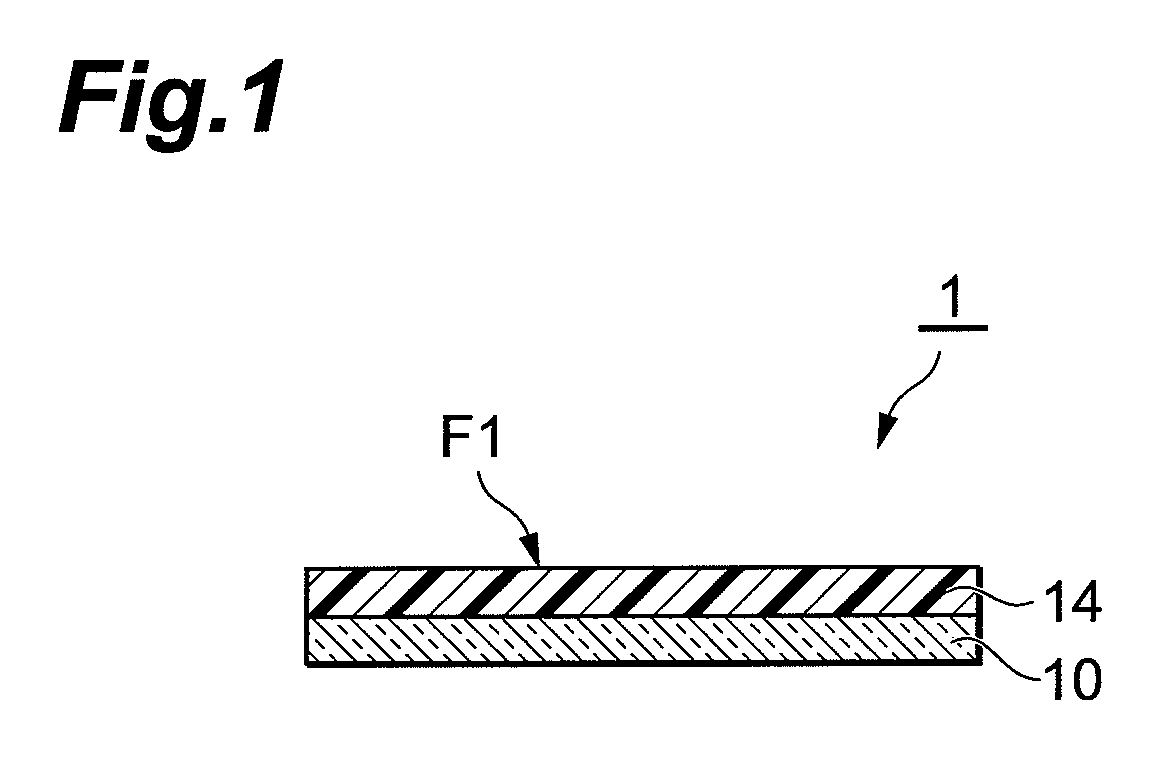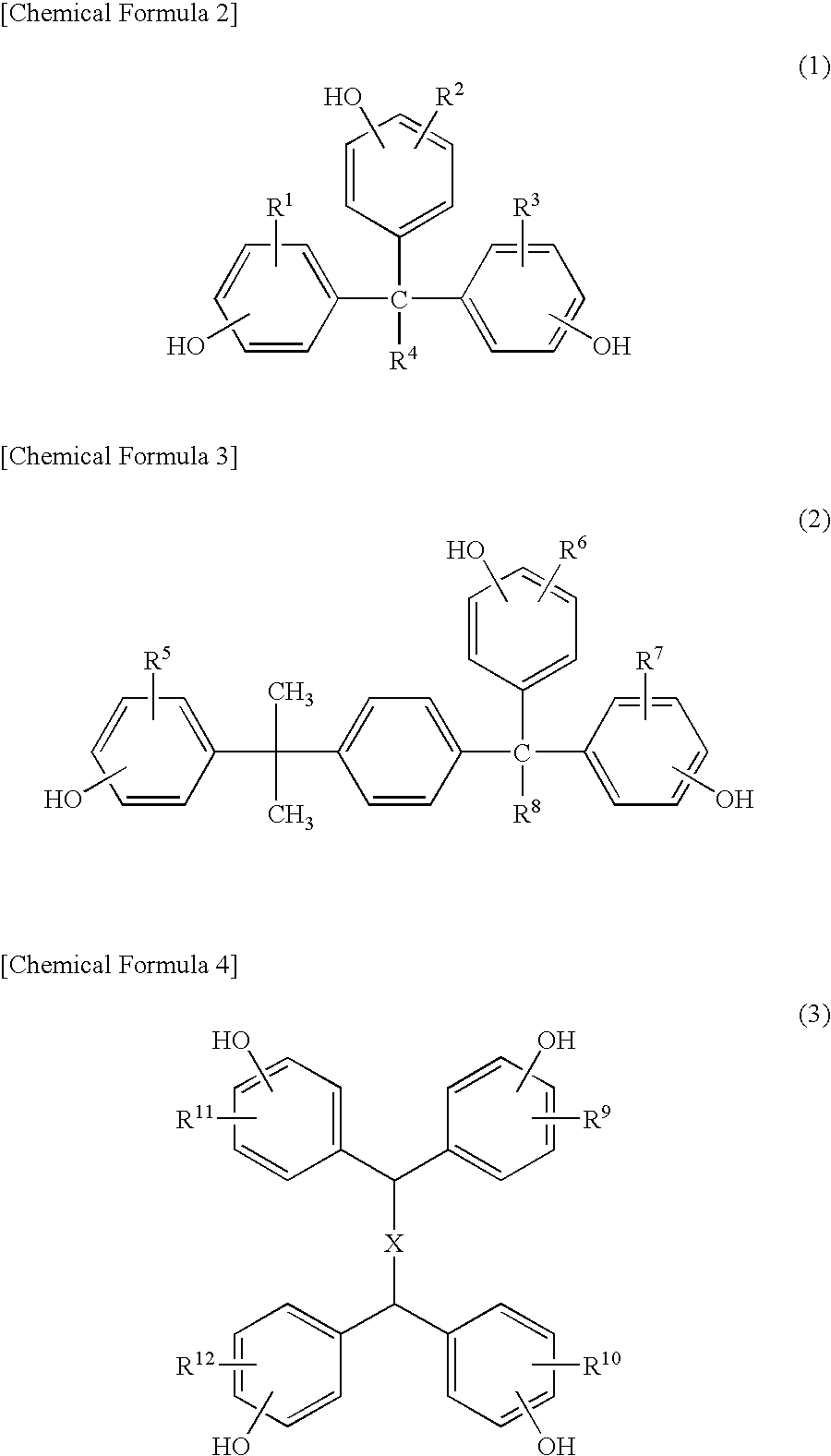Photosensitive resin composition and photosensitive element
a resin composition and resin technology, applied in the direction of photosensitive materials, photomechanical equipment, instruments, etc., can solve the problems of negative photoresist not showing adequate resolution, difficult to use strong alkaline aqueous solutions, and difficult to penetrate the unexposed sections, etc., to achieve high photosensitivity, resolution and adhesiveness, image contras
- Summary
- Abstract
- Description
- Claims
- Application Information
AI Technical Summary
Benefits of technology
Problems solved by technology
Method used
Image
Examples
examples
[0102]The present invention will now be explained in greater detail based on examples and comparative examples, with the understanding that the invention is in no way limited to the examples.
[0103][Synthesis of Novolac Resin A11]
[0104]After combining m-cresol (phenol compound) and p-cresol (phenol compound) in a mass ratio of 50:50, 54 parts by mass of formalin (aldehyde) was added to 216 parts by mass of the mixture. After further adding 2.2 parts by mass of oxalic acid (catalyst), condensation reaction was conducted by an ordinary procedure to obtain a novolac-type phenol resin with a weight-average molecular weight of 10,000. Next, 85 parts by mass of the novolac-type phenol resin, 23 parts by mass of tetrahydrophthalic anhydride (polybasic acid anhydride) and 0.9 part by mass of triethylamine (catalyst) were combined for reaction at 100° C. to obtain component (a) (acid value: 100 mgKOH / g). The resin was designated as novolac resin A 11.
[0105][Synthesis of Novolac Resin A12]
[010...
PUM
| Property | Measurement | Unit |
|---|---|---|
| acid value | aaaaa | aaaaa |
| acid value | aaaaa | aaaaa |
| acid value | aaaaa | aaaaa |
Abstract
Description
Claims
Application Information
 Login to View More
Login to View More - R&D
- Intellectual Property
- Life Sciences
- Materials
- Tech Scout
- Unparalleled Data Quality
- Higher Quality Content
- 60% Fewer Hallucinations
Browse by: Latest US Patents, China's latest patents, Technical Efficacy Thesaurus, Application Domain, Technology Topic, Popular Technical Reports.
© 2025 PatSnap. All rights reserved.Legal|Privacy policy|Modern Slavery Act Transparency Statement|Sitemap|About US| Contact US: help@patsnap.com



